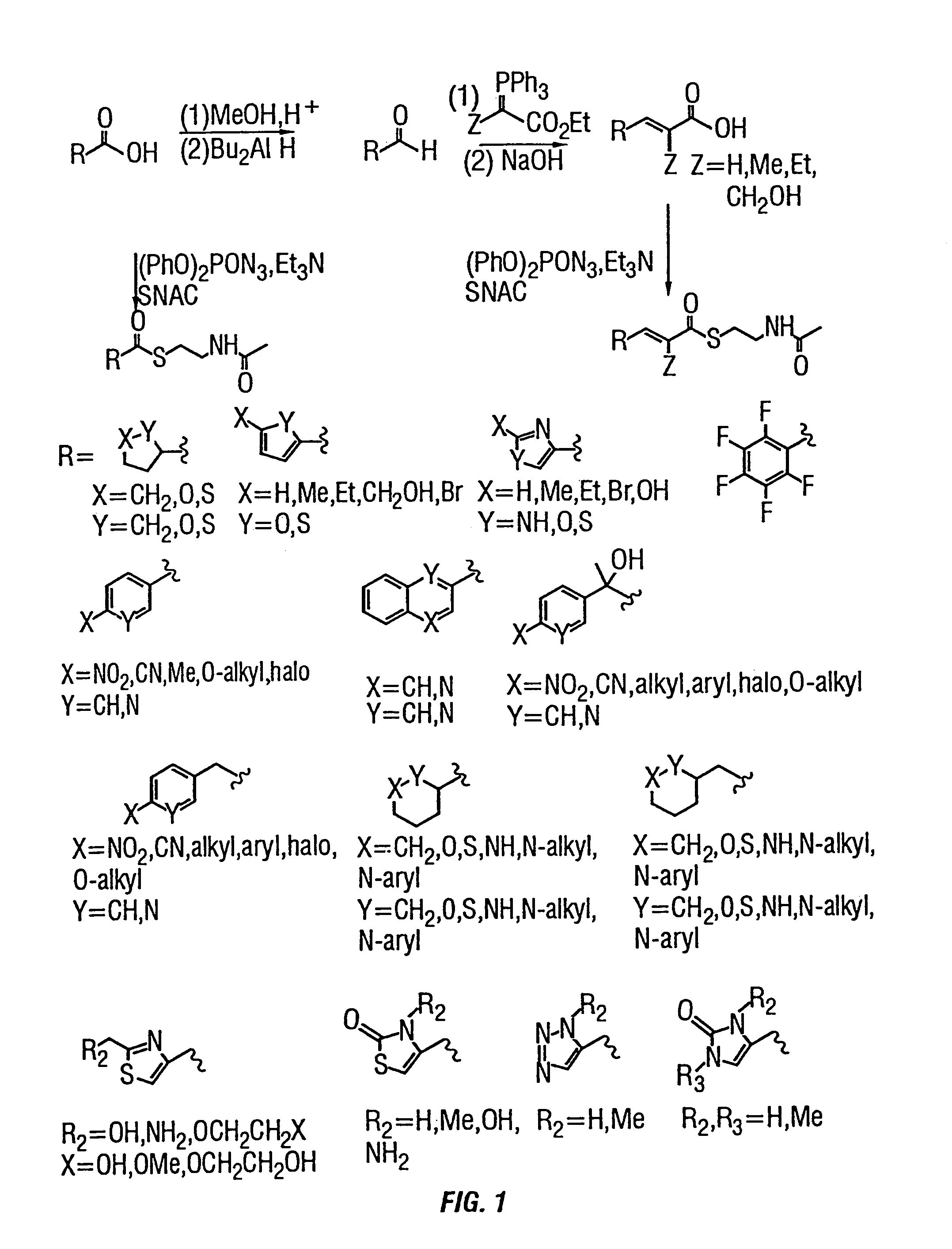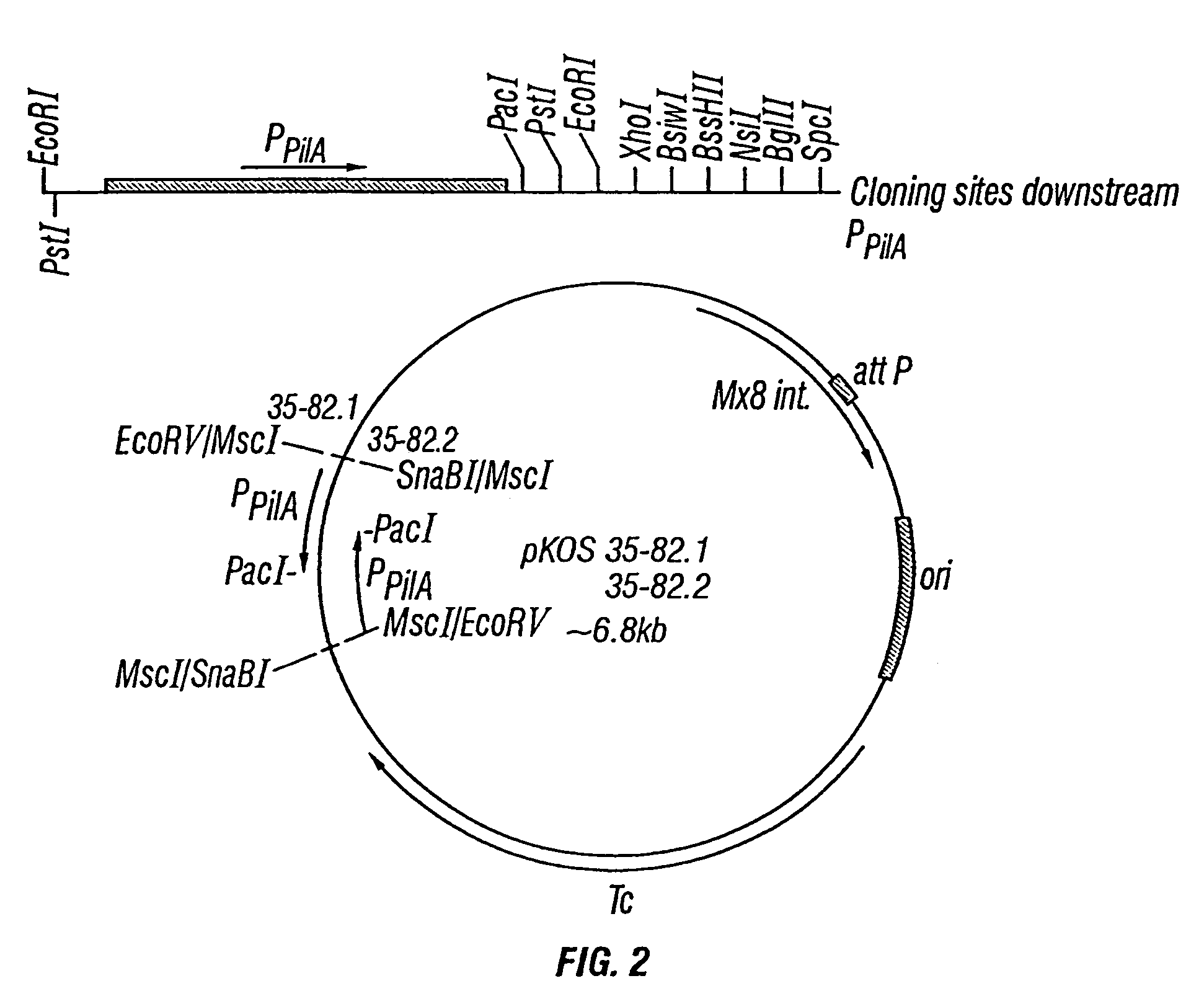Production of polyketides
a polyketide and polymer technology, applied in the field of recombinant methods and materials for producing polyketides, can solve the problems of inability to fully realize the full-scale pharmaceutical development of any epothilone, the synthesis of epothilones is tedious, time-consuming and expensive, and certain polyketides are expressed only at very low levels in or are toxi
- Summary
- Abstract
- Description
- Claims
- Application Information
AI Technical Summary
Benefits of technology
Problems solved by technology
Method used
Image
Examples
example 1
Construction of a Myxococcus xanthus Expression Vector
[0343]The DNA providing the integration and attachment function of phage Mx8 was inserted into commercially available pACYC184 (New England Biolabs). An ˜2360 bp MfeI-SmaI from plasmid pPLH343, described in Salmi et al., February 1998, J. Bact. 180(3): 614-621, was isolated and ligated to the large EcoRI-XmnI restriction fragment of plasmid pACYC184. The circular DNA thus formed was ˜6 kb in size and called plasmid pKOS35-77.
[0344]Plasmid pKOS35-77 serves as a convenient plasmid for expressing recombinant PKS genes of the invention under the control of the epothilone PKS gene promoter. In one illustrative embodiment, the entire epothilone PKS gene with its homologous promoter is inserted in one or more fragments into the plasmid to yield an expression vector of the invention.
[0345]The present invention also provides expression vectors in which the recombinant PKS genes of the invention are under the control of a Myxococcus xanthu...
example 2
Chromosomal Integration and a Bacterial Artificial Chromosome (BAC) for Expression of Epothilone in Myxococcus xanthus
[0354]To express the epothilone PKS and modification enzyme genes in a heterologous host to produce epothilones by fermentation, Myxococcus xanthus, which is closely related to Sorangium cellulosum and for which a number of cloning vectors are available, is employed in accordance with the methods of the invention. M. xanthus and S. cellulosum are myxobacteria and so may share common elements of gene expression, translational control, and post translational modification. M. xanthus has been developed for gene cloning and expression: DNA can be introduced by electroporation, and a number of vectors and genetic markers are available for the introduction of foreign DNA, including those that permit its stable insertion into the chromosome. M. xanthus can be grown with relative ease in complex media in fermentors and can be subjected to manipulations to increase gene expr...
example 3
Processes for the Production and Purification of Epothilones
A. Optimizing the Heterologous Production of Epothilone D in Myxococcus xanthus
[0367]The heterologous production of epothilone D in Myxococcus xanthus was improved by 140-fold from an initial titer of 0.16 mg / L with the incorporation of an adsorber resin, the identification of a suitable carbon source, and the implementation of a fed-batch process.
[0368]To reduce the degradation of epothilone D in the basal medium, XAD-16 (20 g / L) was added to stabilize the extracellular product. This greatly facilitated its recovery and enhanced the yield by three-fold. The use of oils as a carbon source for cell growth and product formation was also evaluated. From a screen of various oils, methyl oleate was shown to have the greatest impact. At the optimal concentration of 7 mL / L in a batch process, the maximum cell density was increased from 0.4 g dry cell weight (DCW) / L to 2 g DCW / L. Product yield depended on the presence of trace ele...
PUM
 Login to View More
Login to View More Abstract
Description
Claims
Application Information
 Login to View More
Login to View More - R&D
- Intellectual Property
- Life Sciences
- Materials
- Tech Scout
- Unparalleled Data Quality
- Higher Quality Content
- 60% Fewer Hallucinations
Browse by: Latest US Patents, China's latest patents, Technical Efficacy Thesaurus, Application Domain, Technology Topic, Popular Technical Reports.
© 2025 PatSnap. All rights reserved.Legal|Privacy policy|Modern Slavery Act Transparency Statement|Sitemap|About US| Contact US: help@patsnap.com



